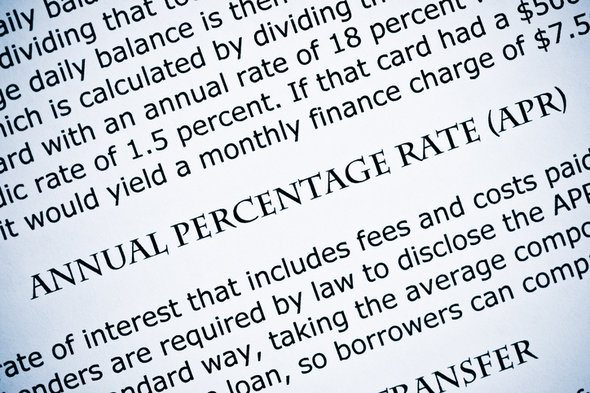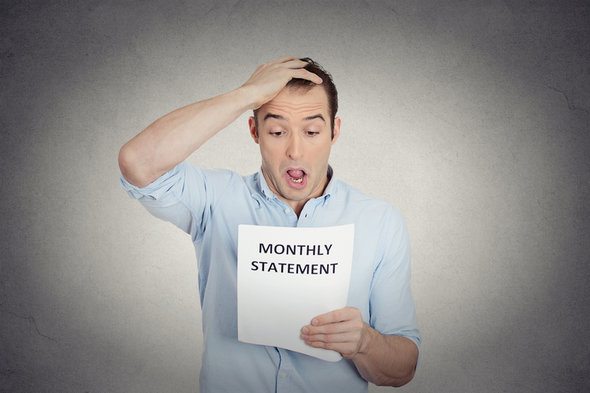Are you wondering just how much it costs you to to carry a credit card balance? To understand how much you’re going to pay in interest, you will need to understand how your card’s annual percentage rate (APR) works. The APR is the yearly interest rate charged on a credit card. The higher the APR, the more interest you’ll pay when you carry a balance. Formulas for calculating a credit card’s interest do vary, but most credit card issuers use a daily periodic rate and average monthly balance to calculate interest charges. You can make these calculations on your own, so let’s walk through everything you need to know in order to calculate interest charges for your credit card.
A financial advisor can help you answer questions about different types of debt and how it can affect your financial plan.
What Is APR?
Before we look at how to calculate your credit card interest, let’s review what APR is. The APR on your credit card is the annual rate at which your card issuer will charge you interest whenever you carry a balance. The higher a credit card’s APR, the more interest you’ll pay. If you always pay your bill in full and you never carry a balance, then APR and interest charges won’t affect you.
There are two main types of APR that a credit card issuer might use. Some cards will have a variable APR and others will have a fixed-rate APR. Variable rate credit cards have an interest rate that is tied to an index such as the U.S. prime rate. When the U.S. prime rate changes, the interest rate on those credit cards will change as well. A credit card with a variable APR may change monthly, quarterly or yearly. You can find the exact time in the credit card’s terms. Review your agreement or contact your issuer for details.
The interest rates with a fixed-rate APR will not change with any index. Those rates can still change but your card issuer is required by law to give you plenty of notice before any change. The Credit Card Accountability Responsibility and Disclosure (CARD) Act of 2009 requires credit card issuers to give 45-day advance notice of any interest rate increases. (The requirement was 15-day advance notice before the CARD Act.)
APR is an annual rate but it doesn’t get charged annually. Credit card issuers use the rate to determine how much to charge in interest each month. And to decide that, they use a calculation called the daily periodic rate. Calculating that daily rate is your first step in calculating your interest.
Step 1: Calculate Your Daily Periodic Rate
Your credit card issuer will use your card’s APR to determine how much you pay in interest. First, it converts that annual rate into a daily rate. This is the daily periodic rate (DPR).
To calculate your credit card’s DPR, you need to divide your credit card’s APR by 365. Issuers use this number to represent the number of days in a year. There are a couple of things to note here. Some issuers will use 360 instead of 365. You will need to check with your individual card to make sure you’re using the correct number. Purchases, balance transfers and cash advances also have different APRs for cards. Make sure that you are using the correct APR when for your calculations.
Once you divide the APR, you have the DPR. That number, multiplied by the amount you owe, is the amount of interest that you owe after each day. The daily amounts are added up into one lump sum at the end of your billing cycle (i.e. the end of the month). That sum is your interest charge for the month. However, there is one more number to consider: your average daily balance.
Step 2: Calculate Your Average Daily Balance

One big challenge with calculating credit card interest is that your credit card balance can change over the course of a month. You might start the month owing a balance of $1,000 but if you spend $20 a few days later, your balance goes up to $1,020. Your balance will also go down if you make a payment.
Interest on a credit card applies to your total balance but what happens when your balance changes? To handle that, your credit card issuer will use your average daily balance to calculate interest charges. This is the average of the daily balances that you owed over that month or billing cycle.
To calculate this average you need to write down the balance that you owed at the end of each day of the billing cycle and then average all those numbers. If you owe $1,000 for the first 15 days of a month and then you owe $2,000 over the last 15 days of the month (meaning you charge $1,000 halfway through the month) then your average daily balance is $1,500. This is the number your card issuer will use to calculate interest.
Step 3: Calculate Your Interest Charges
Once you know your DPR and your average daily balance, you can calculate how much you should owe in interest at the end of the month. Let’s look at a simple example.
Imagine you have a balance of $1,000 on your credit card at the beginning of the month and your APR is 20%. You don’t use your credit card during the month so your balance stays at $1,000. In this case, your DPR is 0.054795% ($20 / 365). Multiply that DPR by your average daily balance of $1,000 and by the number of days in the month (let’s say 30) and you have your interest charge for the month. In this example, your card issuer should charge you $16.44 in interest (0.054795% DPR x $1,000 average daily balance x 30 days in month = $16.44 in interest ).
Watch Out for Penalty APRs
Your credit card issuer may bump up your APR to a penalty APR if you are more than 60 days late on making the minimum payment due on your account. This could be twice as high as your standard APR in some cases.
You will also need to keep that penalty APR for a certain amount of time before your credit card issuer will even think about lowering your APR back to normal. That means six months or more of on-time payments with the penalty rate in effect.
It’s important to be smart about your credit card payments to avoid triggering this higher interest rate. You might want to set up payment reminders by text or email so you don’t forget. You could also consider changing the due date of your credit card bill. Maybe you change the due date to the same time as your other bills (like electricity or rent). Maybe you move your due date closer to a payday so that you always have plenty of funds in your account.
Bottom Line

It’s a good idea to understand how your credit card issuer will calculate interest charges on your credit card. Different credit card issuers may use slightly different formulas, but you can calculate your interest charges as long as you know your credit card’s annual percentage rate (APR).
You’ll need to first convert that annual rate to a daily rate and then figure out the average balance that you owed over the course of a billing cycle. This may sound challenging, especially if math isn’t your strong suit, but you can handle it easily with the help of a calculator or spreadsheet app. Calculating interest charges on your own is empowering because it lets you check that your credit card issuer isn’t charging you more than they should.
Tips for Saving Money on Interest
- Remember that you won’t have to pay any interest if you pay your credit card bill in full by its due date. So the best way to save on interest is by never carrying a balance. Emergencies happen though. If you do carry a balance, the amount that you pay in interest will depend on your card’s APR and your total balance. That means you can help yourself by choosing a credit card with a low APR.
- A financial advisor can also help you create a financial plan to manage your debt. Finding a financial advisor doesn’t have to be hard. SmartAsset’s free tool matches you with up to three vetted financial advisors who serve your area, and you can interview your advisor matches at no cost to decide which one is right for you. If you’re ready to find an advisor who can help you achieve your financial goals, get started now.
Photo credit: ©iStock.com/SIphotography, ©iStock.com/vgajic, ©iStock.com/Pawel Gaul
